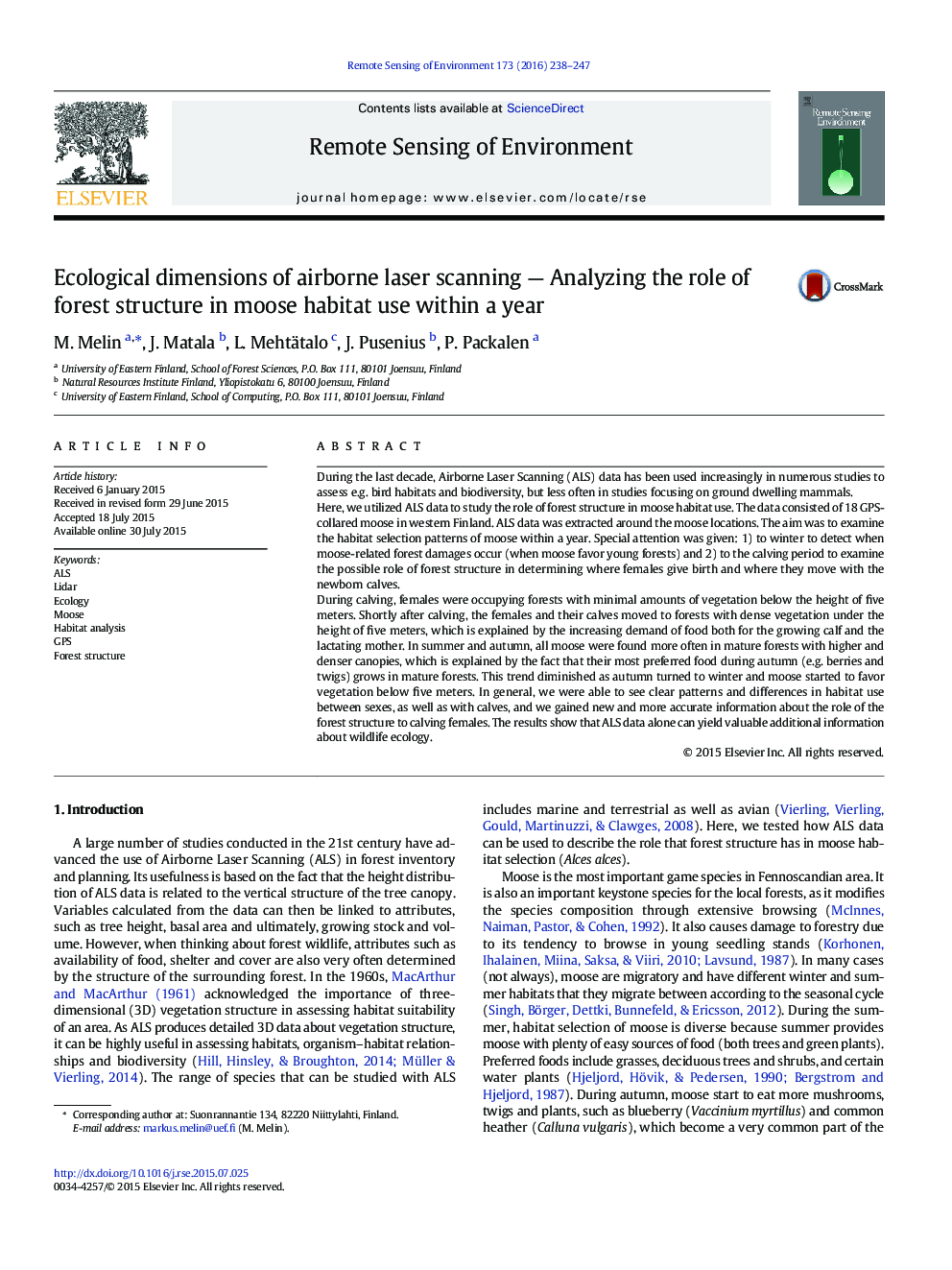| کد مقاله | کد نشریه | سال انتشار | مقاله انگلیسی | نسخه تمام متن |
|---|---|---|---|---|
| 6345681 | 1621227 | 2016 | 10 صفحه PDF | دانلود رایگان |

- In this study, we linked ALS data to moose locations from GPS-collars.
- Onwards from the birth of new calves, the animals were followed for one year.
- Sex, and calves caused significant differences in seasonal habitat selection.
- In particular, the behavior of calving females differed from the other groups.
- We received new information about female behavior during and after calving.
During the last decade, Airborne Laser Scanning (ALS) data has been used increasingly in numerous studies to assess e.g. bird habitats and biodiversity, but less often in studies focusing on ground dwelling mammals.Here, we utilized ALS data to study the role of forest structure in moose habitat use. The data consisted of 18 GPS-collared moose in western Finland. ALS data was extracted around the moose locations. The aim was to examine the habitat selection patterns of moose within a year. Special attention was given: 1) to winter to detect when moose-related forest damages occur (when moose favor young forests) and 2) to the calving period to examine the possible role of forest structure in determining where females give birth and where they move with the newborn calves.During calving, females were occupying forests with minimal amounts of vegetation below the height of five meters. Shortly after calving, the females and their calves moved to forests with dense vegetation under the height of five meters, which is explained by the increasing demand of food both for the growing calf and the lactating mother. In summer and autumn, all moose were found more often in mature forests with higher and denser canopies, which is explained by the fact that their most preferred food during autumn (e.g. berries and twigs) grows in mature forests. This trend diminished as autumn turned to winter and moose started to favor vegetation below five meters. In general, we were able to see clear patterns and differences in habitat use between sexes, as well as with calves, and we gained new and more accurate information about the role of the forest structure to calving females. The results show that ALS data alone can yield valuable additional information about wildlife ecology.
Journal: Remote Sensing of Environment - Volume 173, February 2016, Pages 238-247